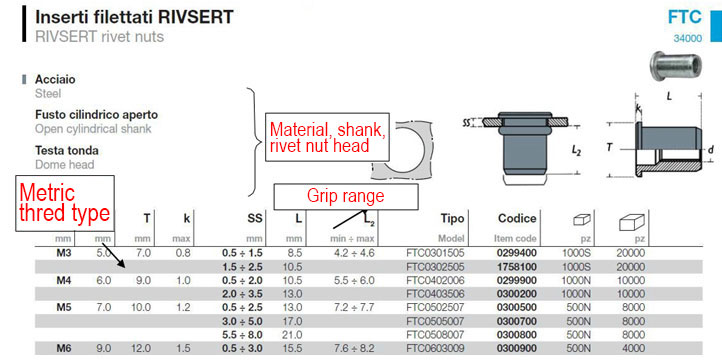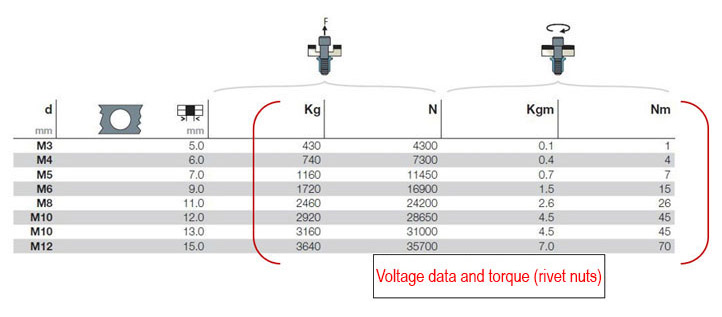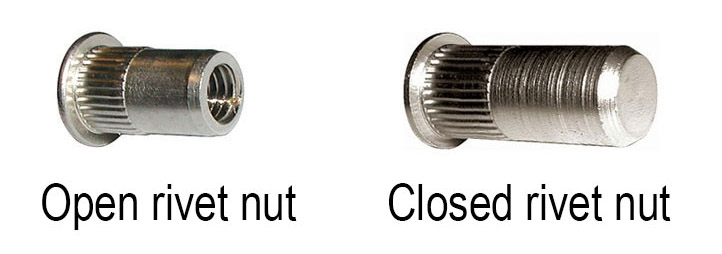Headlines
Rivet Nuts
Tuesday, November 3, 2020
The rivet nuts allow the creation of threads on thin sheet metal surfaces.
The rivet nuts are bushings with threaded seat and a chamber to be expanded into a permanent deformation on metal or plastic sheets; they are suitable for receiving other elements to be assembled through the use of screws. This type of fastener is recommended for assembly of boxed-shaped and tubular parts.
To identify the correct rivet nut for your requirements, the following criteria must be taken into consideration:
1.Material of the rivet nut (aluminum, steel, sainless steel)
2.Head of the rivet nut (dome, reduced, countersunk)

3. Type of shank: cylindrical, hexagonal or semi-hexagonal and knurled or plain.

4. Metric thread type (according to the screw to be used)

5. Mechanical characteristics required by the application, i.e. tensile strength.
6.Total grip range (torsional moment)

7.Required performance: if the rivet nuts are placed to be in contact with fluids which do not have to pass through, watertight rivet nuts are necessary.
 The rivet nuts can be used to assemble thin sheet materials, such as gaskets and lids on frames, or other light joints in automotive, aerodynamic and aerospace industries.
The rivet nuts can be used to assemble thin sheet materials, such as gaskets and lids on frames, or other light joints in automotive, aerodynamic and aerospace industries.They can be used for fastening more elements together in agricultural equipments, civil works and sliding doors assembling
Riveters to place rivet nuts are available as:
- hand riveters: easy to use and ideal for non-continuous works;
- hydro pneumatic riveters: specifically for all professional and continuous installation works;
- battery riveters: as cordless they result to be much easier to handle and easily transportable.

 Deutsch
Deutsch
 Français
Français
 Italiano
Italiano
